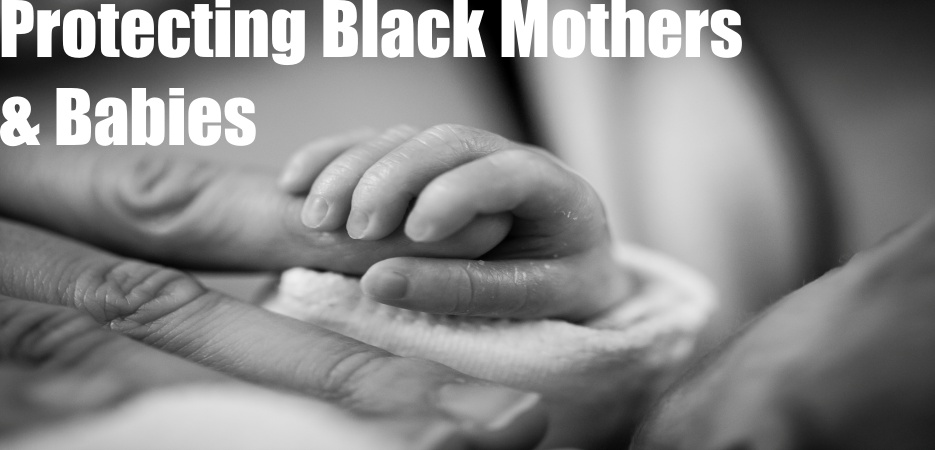In the year 2021, it is tragic that a title such as “Protecting Black mothers and babies,” must be written about. It has been 158 years since the official end of slavery for African Americans because of Abraham Lincoln’s Emancipation Proclamation in 1863. One would think this should have ignited a permanent transformation towards equality in all aspects of the lives of Black people in America. It did not! Certainly, the degree of racism in the US has diminished tremendously, but not enough.
The mere fact that this topic is being discussed means that not enough has been done, particularly in healthcare. This topic is an extension of the degree of severity and its magnitude of Black Americans’ poor health and sufferings that it prompted this statement, “’Nevertheless, death rates in the 1870, 1880, and 1890 censuses were so staggering, the New York Life’s and Equitable’ s actuaries confidently predicted black extinction by 2000 AD.’ (2, 3) Poverty, the lack of healthcare, poor sanitation and housing carried the ‘slave health deficit’ into the 20th century.” (1)
The Problem
African Americans have never experienced an overall period of wellness since they left the slave ships. Today, we find that the differences in healthcare of Black and white Americans shows itself present in the outcomes of care for Black women and babies.
Overall, Black women are three to four times more likely to die of pregnancy-related complications during childbearing and have greater pregnancy losses of 2 to 3 times higher, e. g. miscarriages, stillbirths, and prematurity than any other ethnic group in the US. This continues even when compared to other women of color from African and Caribbean nations.
Additionally, Black American women are subject to higher levels of type 2 diabetes, hypertension, overweight and obesity, and more than the other American populations. These higher rates are not resolved even when corrected for education or socioeconomic levels. Therefore, the causes and effects are still unclear. Examples of these racial healthcare discrepancies in Black women were highlighted in the lives and pregnancies of two of the most notable Black affluent women in America and the world: Serena Williams and Beyoncé. Both suffered near death experiences during their pregnancies. Why?
Add to the above this amazing statement regarding the higher infant deaths for Black women, “The answer to the infant mortality gap does not lie in universal access to women’s and perinatal health services, nor in higher quality systems of health care for high-risk pregnancies, though these solutions would help. Rather, we need policies that value all children and treat their needs holistically, regardless of their race, ethnicity, immigrant status, or social class, and support their parents in their efforts to nurture them on the tortuous path to full participation in American society.” (4)
Where to Look for Answers
Overweight and Obesity
There are some areas that are known to cause increased probability of disease and poor pregnancy outcomes. The first is well known and contributes to the second. Being overweight or obese are well known factors contributing to other diseases. These two conditions are what I consider gateway diseases as they are directly linked to cause and effect of other diseases especially in Black women where 4 of 5 are in these categories.
The extent of the causes of the issues of weight are too great a topic to drill down in this article. However, it must be said that central to the cause is nutrition. This is simple enough to say, but it does not address the critical issues of food deserts in the Black community, the exceptionally high presence of fast foods in these communities and eating culturally derived foods – “soul food.” The latter is known to have too much salt, sugar and fat, and not enough nutritional value of the healthy stuff. Soul food, as we call it today, was the food that kept us alive when we were starving as slaves. But back then, they did not know or could care less about “nutritional value.” It was eat this or die. And the men and women who made “food” out of the Masters’ garbage saved our lives.
The Environment, the toxicity of Black women and babies
Accompanying overweight and obesity is a topic rarely discussed in the Black community: the environment. How are the two related? Scientists know that in a toxic environment, toxins are stored in fat cells of the residents who live in toxic communities.
From the Office of Disease Prevention and Health Promotion comes this statement, “Poor environmental quality has its greatest impact on people whose health status is already at risk. Therefore, environmental health must address the societal and environmental factors that increase the likelihood of exposure and disease.” (5) This is further supported by a study sponsored by the NAACP and the Clean Air Task Force, publishing Fumes Across the Fence-Line, examining how communities of color became some of the most toxic communities in America. (6)
Add to this the findings of the Environmental Working Group where they tested the cord bloods, “… of these 10 children, (babies of color) …harbored pesticides, consumer product ingredients, and wastes from burning coal, gasoline, and garbage…” From this blood, 287 chemicals were detected, 180 cause cancer, 217 are toxic to the brain and nervous system, and 208 cause birth defects, or abnormal development. (7) This says nothing about exposures to the heavy metals, lead, mercury, and arsenic in these communities, nor the pollutants in the air. I can go on, but you get the gist. These poisons that are already in the mothers, causing damage to them, cross through the placenta into the fetus and contaminate all their unprotected tissues.
Implicit Bias
Last, but not at all the least, is the issue of implicit bias. These two little words – implicit bias – almost sound innocuous, unfortunately this is far from the case. For Black folks being cared for in the hands of white healthcare providers, it is a matter of life and death.
A study on racial disparities revealed that when Black babies are cared for by white doctors, their survival rates decline significantly, compared to Black babies being cared for by Black doctors where the survival rates doubles. (8) Black patients will also tell you that they are less likely to receive quality care at the hands of white doctors than when cared for by someone that looks like them.
Conclusion
Everything in this article is known in the healthcare community. Yet, medical and nursing schools fail to teach this information to their students. Their persistent faulty reasoning is that their schools reflect society at large and therefore the schools cannot make a difference in the experienced attitudes. What a bunch of nonsense.
These schools can teach whatever they wish. The problem is – they don’t wish. Therein lies much of what is discussed in our society today: institutional racism. Given the information presented, you can decide for yourself. If you believe, as I do, that institutional racism does exist, do something about it regardless of your race, ethnicity, skin color or whatever. Make a difference.
Citations:
- Farley R. Growth of the Black Population: A Study of Demographic Trends. Chicago, III: Markham Publishing Co; 1970.
- Jones JH. Bad Blood: The Tuskegee Syphilis Experiment. New York, NY: The Free Press; 1981.
- Haller JS. Outcasts. From, Evolution: Scientific Attitudes of Racial Inferiority, 1859-1900. New York, NY: McGraw-Hill Book Co; 1971.
- Am J Public Health. 2017 May; 107(5): 644–645. Published online 2017 May. The US Black–White Infant Mortality Gap: Marker of Deep Inequities Russell S. Kirby, PhD
- The Office of Disease Prevention and Health Promotion. https://www.healthypeople.gov/2020/topics-objectives/topic/environmental-health
- NAACP/CATF. Fumes Across the Fence. http://www.catf.us/wp-content/uploads/2017/11/CATF_Pub_FumesAcrossTheFenceLine.pdf
- Body Burden. The Pollution in Newborns. Environmental Working Group July 14, 2005.
- Physician–patient racial concordance and disparities in birthing mortality for newborns. Brad N. Greenwood, Rachel R. Hardeman, Laura Huang, et al. September 1, 2020 117 (35) 21194-21200; 2020.














